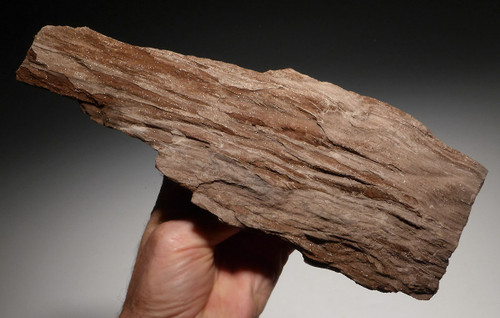Product Description
This is part of a lifelike permineralized fossil log from the Triassic Period of Germany. That alone is rare enough but there is one feature that makes this a truly MAGICAL specimen - it sparkles like a million stars at night because over and amongst the stunning preservation of actual fibrous wood structures, is a layer of drusy micro-crystals that causes the fossil wood to shimmer like it was coated in diamonds! Unfortunately, no words or photos can do this amazing specimen justice which is why we included a video above of a representative specimen to demonstrate the visual effect this amazing fossil possesses.
This piece came from a very limited collection we acquired a few years ago from the original person that dug these fossils. They came from a coal mine in Zwenkau, Germany that is not closed and reclaimed (buried and no longer accessible). The prospect of finding any more of these amazing fossils is forever gone with that mine being closed and filled so after these SUPER RARE pieces are sold, we will never be able to offer these again.
Fossil logs with actual preserved fibrous texture and anatomy like this ARE EXTREMELY RARE but there is the feature of the color and being coated with the drusy micro-crystals that puts this piece truly, into a class all its own. It's like the Hope Diamond of fossil wood - put it in a glass case that can be viewed from all angles and shine a spotlight on it and for sure, it will attract and hold viewers like nothing else. Not only is this a rare FOSSIL but it too, is a rare MINERAL specimen because of the drusy. How many pieces in a collection can qualify for both?
Petrified wood in its natural form is far less prevalent on the market compared to sliced and polished examples. Unfortunately, when such modifications are done to the specimen, the fossil value of the wood is lessened and the piece becomes more of a pretty mineral showpiece rather than an educational and intriguing display fossil because the natural interior and exterior appearance has been modified or in some cases, destroyed.
The unique fossil process has retained the most minute cellular structures and texture of modern wood. Whether for a museum exhibit or private exhibition, this will be treasured as one of the future owner's most memorable specimens. SELDOM do you see petrified fossil wood with these features and this well preserved in such a massive solid natural log!
HISTORY
Petrified wood forms when real wood lies buried underground and its organic structure is gradually replaced with hard mineral. This petrification requires rapid burial of the wood to prevent normal decay. This can happen in different ways. A flooding river can have bury the forest floor under a layer of sand and silt, for example. Another circumstance could occur when forests are covered by volcanic ash. After burial, mineralized groundwater begins to percolate through the wood, coating cell walls and filling the intercellular cavities with stone. In some cases, the entire log is converted to stone and is solid like a cast of the original piece. In other cases, the delicate cellular structures are preserved along with growth rings, bark and knots such that the petrified wood exactly resembles modern wood yet is heavy as stone when held, and clinks like porcelain. Such detailed preservation is possible because the organic wood molecules become coated and surrounded with smaller silica molecules. Small amounts of impurities in the mineralized water add color to the fossilized wood. The hues of yellow, brown and red indicate iron while black and purple are derived from carbon or manganese.
 US DOLLAR
US DOLLAR
 EURO
EURO
 AUSTRALIAN DOLLAR
AUSTRALIAN DOLLAR
 CANADIAN DOLLAR
CANADIAN DOLLAR
 POUND STERLING
POUND STERLING
















